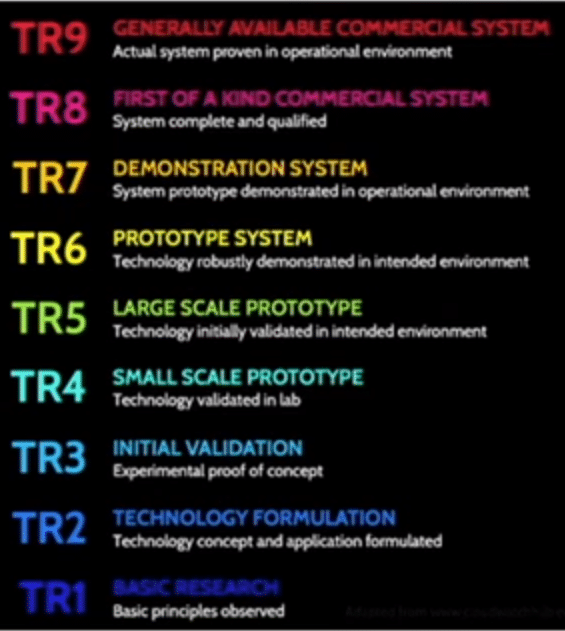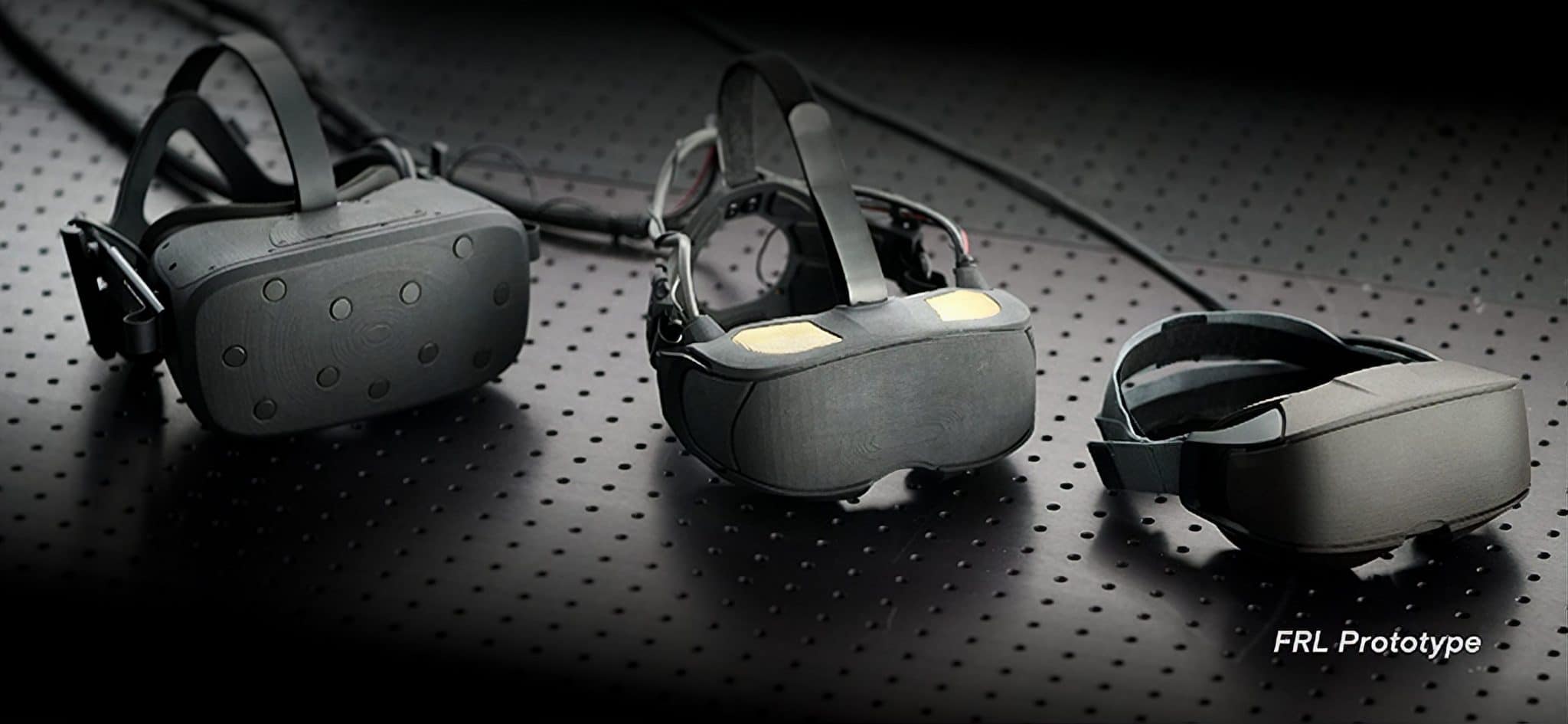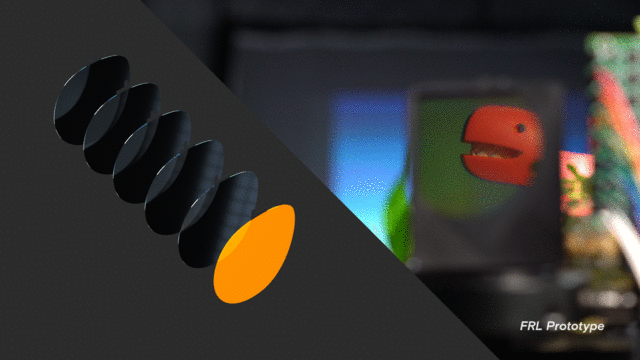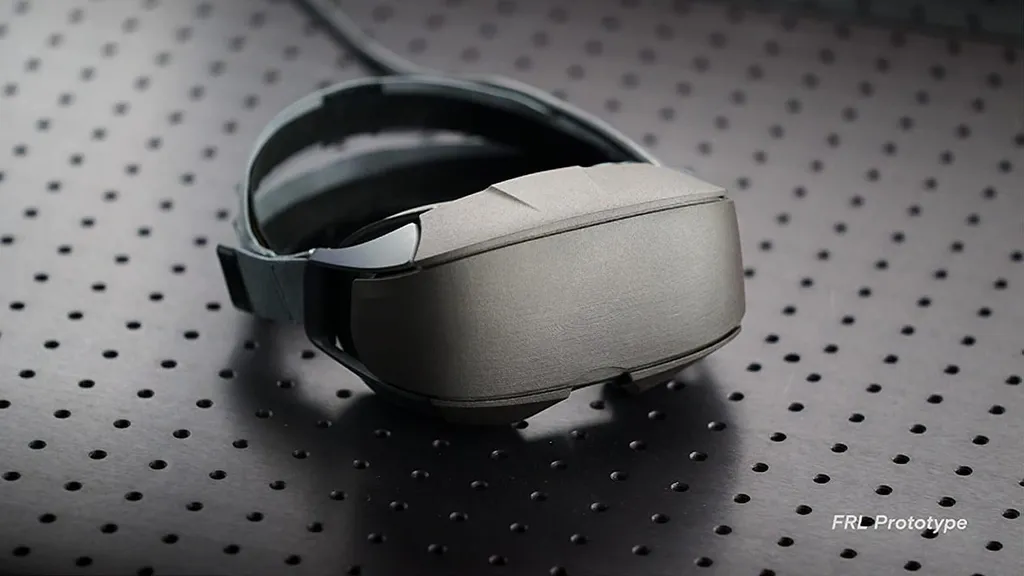Facebook’s Director of Display Systems Research Douglas Lanman revealed the Half-Dome 3 prototype shown late last year is further along the development cycle than some other research projects.
“It’s something that is not quite a publication. It’s beyond that. And this thing is more like level five. It’s almost ready for primetime“
Stated at an SPIE talk given earlier in the year, Lanman was referencing NASA’s Technology Readiness Levels (TRLs), adapted for tech products:

Lanman works at Facebook Reality Labs, the company’s VR/AR research division. He explained that a “real-deal scientist” works at TR1, while his team usually works between TR2 and TR4.
Startups, Lanman elaborated, typically start at TR6 or TR7, whereas shipping a consumer product at scale involves TR7, TR8, and TR9.
“At some point, you walk into an electronics store and you see level nine. And you start to wonder, am I just going to do this cycle of level 2 through 4 forever? How do I actually change the world rather than just have good ideas?”
Lanman explained that what makes him proud of Half-Dome 3 in particular is that it’s at “Level 5 or beyond“. More specifically, it’s “almost ready for prime time“.
All current VR headsets, outside of lab prototypes, have fixed focus lenses. Your brain gets a different image for each eye, but the images are permanently focused at the same distance (usually a few meters away).
This makes VR feel less real since you’re missing one of the real world’s depth cues. It also introduces the Vergence-Accommodation conflict, a leading cause of eye strain in head mounted displays.
The original Half-Dome prototype, shown off at F8 in May 2018, aimed to deliver a near-silent variable focus (varifocal) experience. It also increased the field of view significantly (from around 100 degrees to 140 degrees wide) while maintaining roughly the same form factor as a Quest or Rift.
Half-Dome 1 used physical actuators to move the position of each lens relative to the displays. A product that relies on constant movement like that for hours on end seems like a reliability nightmare waiting to happen, which is where Half-Dome 3 comes in.

Half-Dome 3 was first shown by Facebook’s Chief Scientist Michael Abrash (Lanman’s boss) in October at Oculus Connect 6. The field of view is “20% wider than Quest”, but no longer 140 degrees.
But Half-Dome 3 brought the technology to a considerably smaller design, with no moving parts. This is achieved by using a stack of liquid crystal lens layers. Applying a voltage to each lens layer changes its focal length, so each unique combination of on and off results in a different plane of focus.

At another talk given this year, Lanman expressed just how important he feels variable focus and depth cues are for virtual reality. Given this goal, the number of varifocal prototypes we’ve seen, and Half-Dome 3’s compact form factor and lack of moving parts, could varifocal technology now be out of the research labs- on the beginning of the path to productization?
To be clear, there’s no indication the recent ‘Oculus Quest 2’ leaks have any such technology.






























